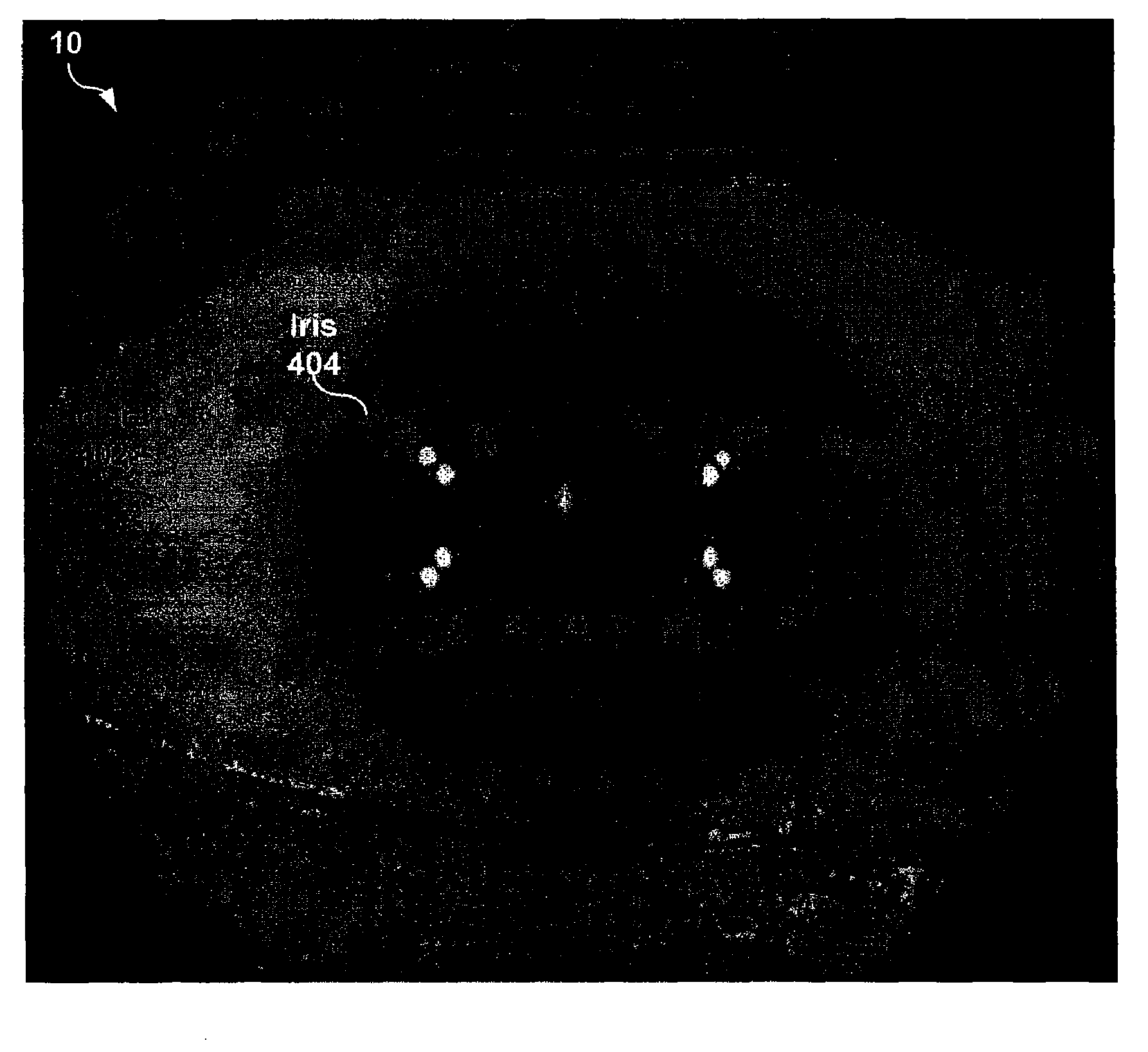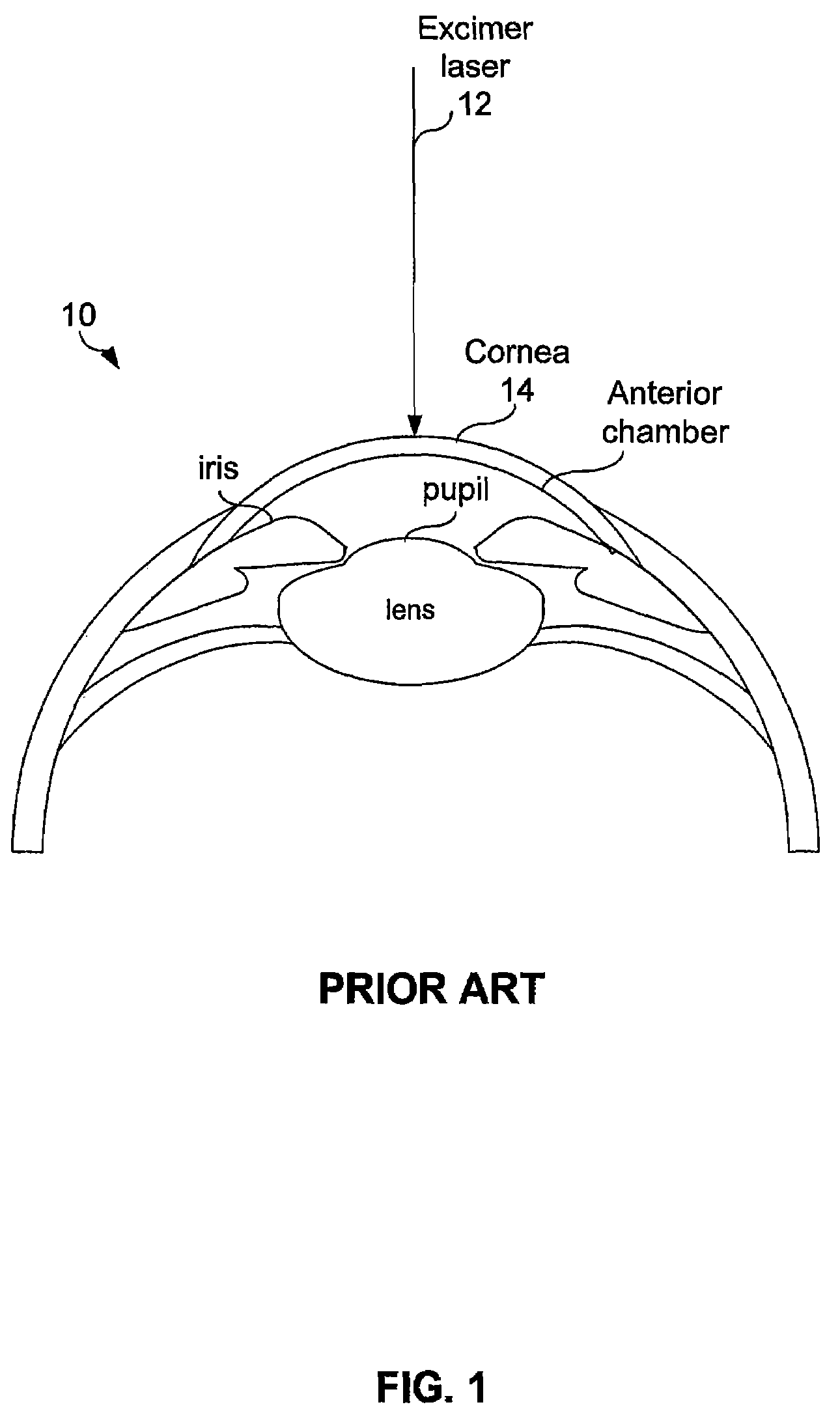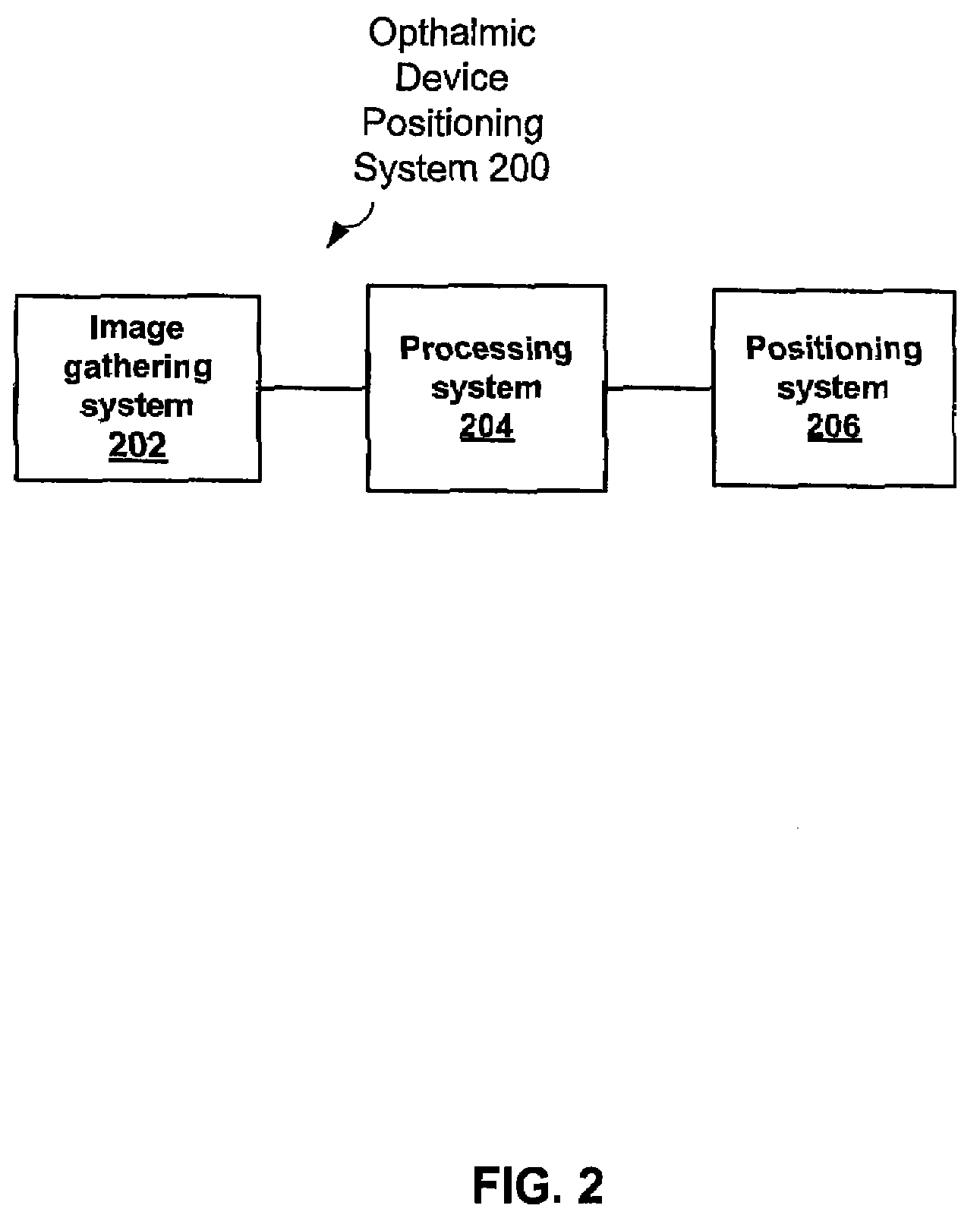Determining optimal positioning of ophthalmic devices by use of image processing and autofocusing techniques
a technology of image processing and autofocusing, applied in the field of determining the optimal positioning of ophthalmic devices, can solve the problems of most time-consuming portions of the procedure, and achieve the effect of high frequency content and highest sharpness function
- Summary
- Abstract
- Description
- Claims
- Application Information
AI Technical Summary
Benefits of technology
Problems solved by technology
Method used
Image
Examples
Embodiment Construction
[0022]Preferred embodiments of the present invention are illustrated in the FIGs., like numerals being used to refer to like and corresponding parts of the various drawings.
[0023]FIG. 2 provides an ophthalmic device positioning system 200. Ophthalmic device positioning system 200 includes an image gathering system 202, a processing system 204, and a positioning system 206. The image gathering system 202 may be a camera or a video device operable to gather a series of images of the eye. Image gathering system 202 is operable to record relative distance between the image gathering system 202 and the eye where the image is gathered. The processing system 204, as will be discussed in further detail, receives the images gathered and performs a sharpness function on each of the gathered images.
[0024]The processing system 204 may be a single processing device or a plurality of processing devices. Such a processing device may be a microprocessor, micro-controller, digital signal processor, ...
PUM
 Login to View More
Login to View More Abstract
Description
Claims
Application Information
 Login to View More
Login to View More - R&D
- Intellectual Property
- Life Sciences
- Materials
- Tech Scout
- Unparalleled Data Quality
- Higher Quality Content
- 60% Fewer Hallucinations
Browse by: Latest US Patents, China's latest patents, Technical Efficacy Thesaurus, Application Domain, Technology Topic, Popular Technical Reports.
© 2025 PatSnap. All rights reserved.Legal|Privacy policy|Modern Slavery Act Transparency Statement|Sitemap|About US| Contact US: help@patsnap.com



